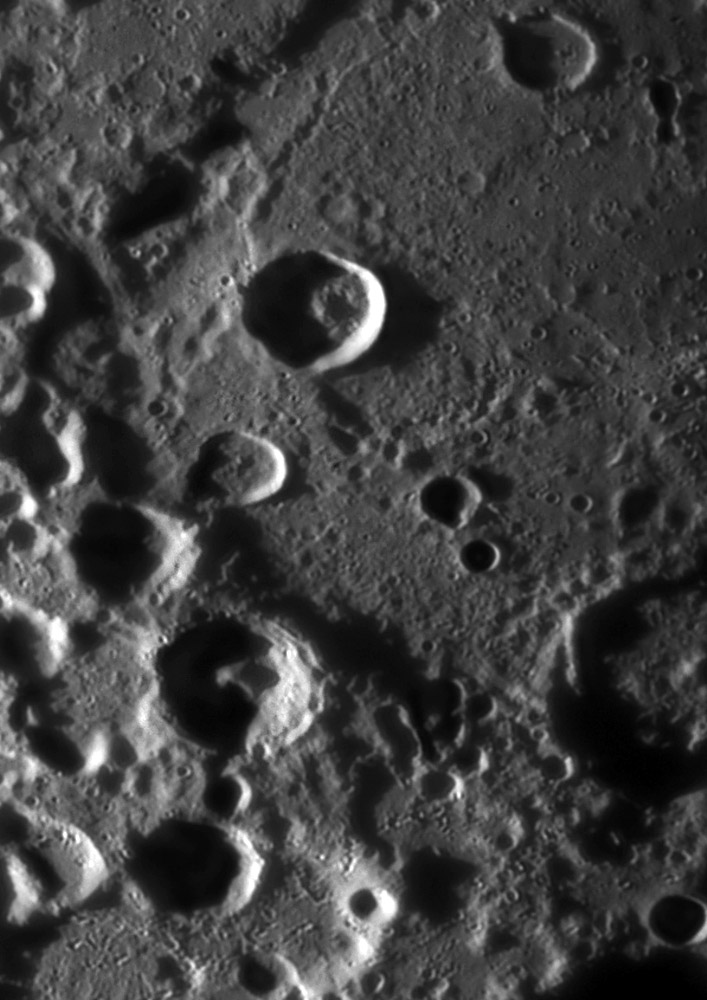Difference between revisions of "November 18, 2011"
| Line 3: | Line 3: | ||
<!-- ws:start:WikiTextHeadingRule:0:<h1> --> | <!-- ws:start:WikiTextHeadingRule:0:<h1> --> | ||
<!-- ws:start:WikiTextLocalImageRule:6:<img src="http://lpod.wikispaces.com/file/view/LPOD-Nov18-11.jpg/276772526/LPOD-Nov18-11.jpg" alt="" title="" /> -->[[File:LPOD-Nov18-11.jpg|LPOD-Nov18-11.jpg]]<!-- ws:end:WikiTextLocalImageRule:6 --><br /> | <!-- ws:start:WikiTextLocalImageRule:6:<img src="http://lpod.wikispaces.com/file/view/LPOD-Nov18-11.jpg/276772526/LPOD-Nov18-11.jpg" alt="" title="" /> -->[[File:LPOD-Nov18-11.jpg|LPOD-Nov18-11.jpg]]<!-- ws:end:WikiTextLocalImageRule:6 --><br /> | ||
| − | <em>image by [mailto:asgmay@alsohispania.e.telefonica.net | + | <em>image by [mailto:asgmay@alsohispania.e.telefonica.net Alex Sanz], Ayllón (Spain)</em><br /> |
<br /> | <br /> | ||
New views bring new perspectives. Alex's closeup of the western half of Deslandres under low illumination reveals a pitted surface with scattered patches of smoothness. For example, when I noticed the smoothness around the small crater near the center right I thought the crater was the one at the center of Cassini's Bright Spot. Its not, that crater is off the image near the top right. The smoothness suggests some powder-like surface - like small size impact ejecta or volcanic ash, but there is no albedo anomaly to suggest either. Just off the top of this image there is some low albedo smooth maria, but if this smooth stuff is also, it has lost its dark hue, as happens as lavas gets draped by impact ejecta over time. Alex's good image has done what a good image should - it has caused me to hunt for explanations for questions I didn't suspect needed one.<br /> | New views bring new perspectives. Alex's closeup of the western half of Deslandres under low illumination reveals a pitted surface with scattered patches of smoothness. For example, when I noticed the smoothness around the small crater near the center right I thought the crater was the one at the center of Cassini's Bright Spot. Its not, that crater is off the image near the top right. The smoothness suggests some powder-like surface - like small size impact ejecta or volcanic ash, but there is no albedo anomaly to suggest either. Just off the top of this image there is some low albedo smooth maria, but if this smooth stuff is also, it has lost its dark hue, as happens as lavas gets draped by impact ejecta over time. Alex's good image has done what a good image should - it has caused me to hunt for explanations for questions I didn't suspect needed one.<br /> | ||
<br /> | <br /> | ||
| − | <em>[mailto:tychocrater@yahoo.com | + | <em>[mailto:tychocrater@yahoo.com Chuck Wood]</em><br /> |
<br /> | <br /> | ||
<strong>Technical Details</strong><br /> | <strong>Technical Details</strong><br /> | ||
| Line 14: | Line 14: | ||
<strong>Related Links</strong><br /> | <strong>Related Links</strong><br /> | ||
Rükl plate 64<br /> | Rükl plate 64<br /> | ||
| − | Alex's website [http://www.astrosurf.com/asanz/asanz | + | Alex's website [http://www.astrosurf.com/asanz/asanz astrophotography]<br /> |
<hr /> | <hr /> | ||
Revision as of 17:42, 11 January 2015
The Right Side of Hell

image by Alex Sanz, Ayllón (Spain)
New views bring new perspectives. Alex's closeup of the western half of Deslandres under low illumination reveals a pitted surface with scattered patches of smoothness. For example, when I noticed the smoothness around the small crater near the center right I thought the crater was the one at the center of Cassini's Bright Spot. Its not, that crater is off the image near the top right. The smoothness suggests some powder-like surface - like small size impact ejecta or volcanic ash, but there is no albedo anomaly to suggest either. Just off the top of this image there is some low albedo smooth maria, but if this smooth stuff is also, it has lost its dark hue, as happens as lavas gets draped by impact ejecta over time. Alex's good image has done what a good image should - it has caused me to hunt for explanations for questions I didn't suspect needed one.
Chuck Wood
Technical Details
Sep 20th 2011. C11 HD edge at f30 + DMK 31+ red filter
Related Links
Rükl plate 64
Alex's website astrophotography



